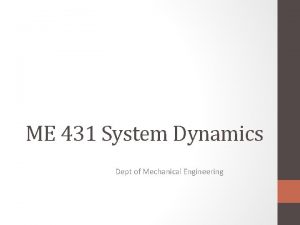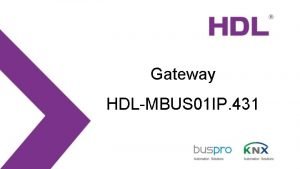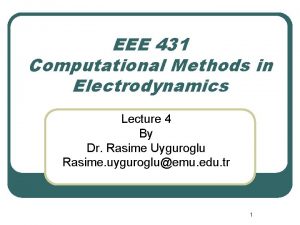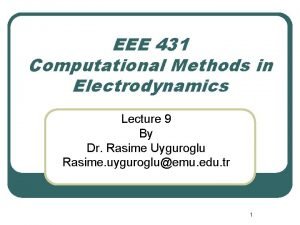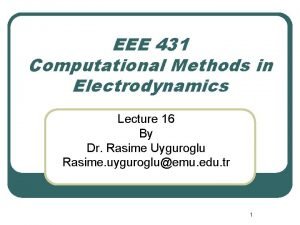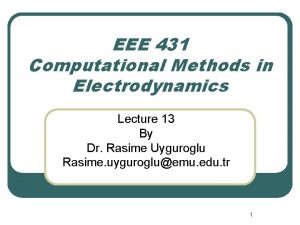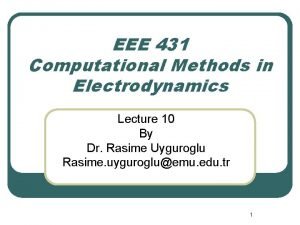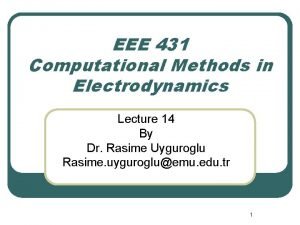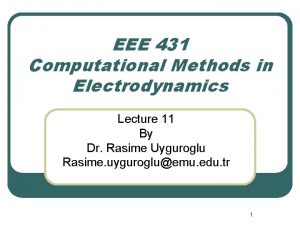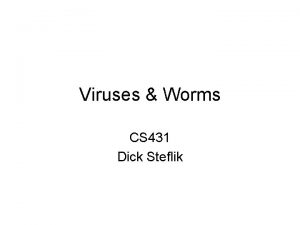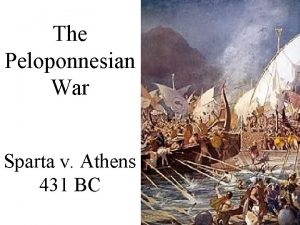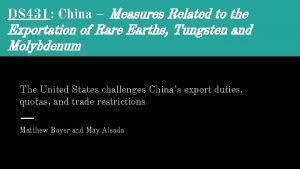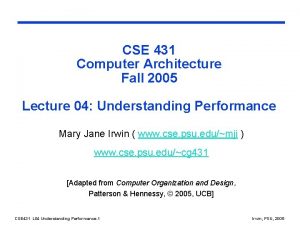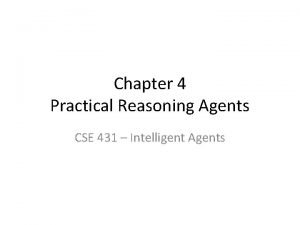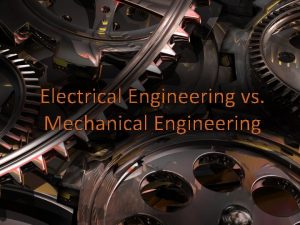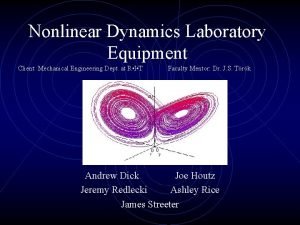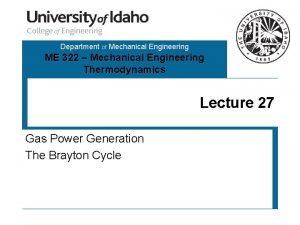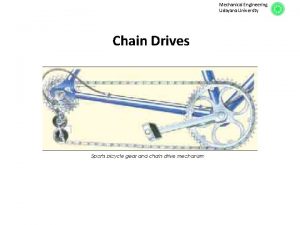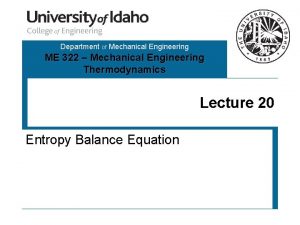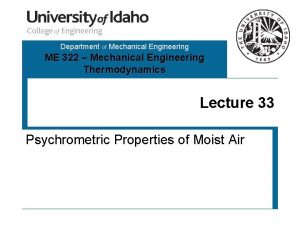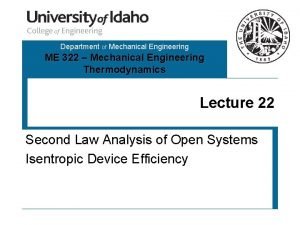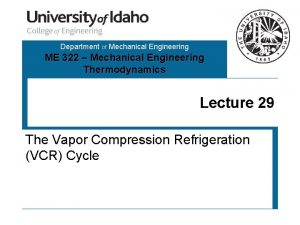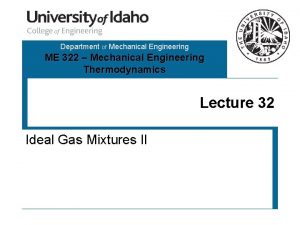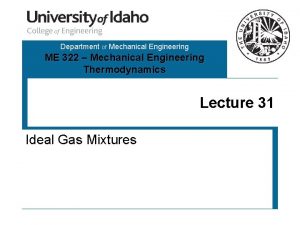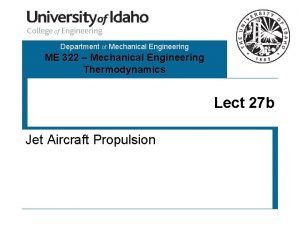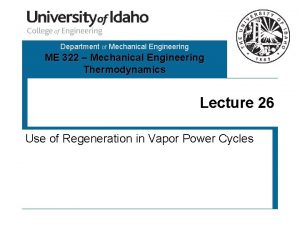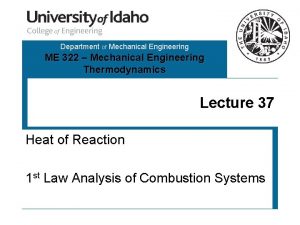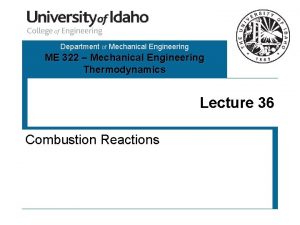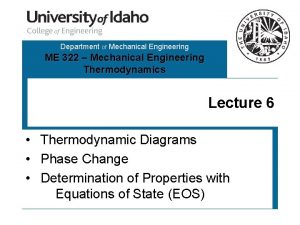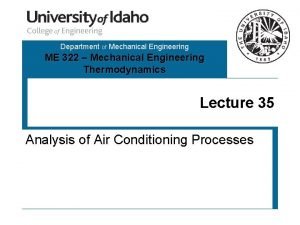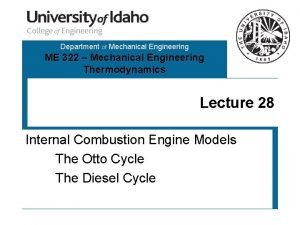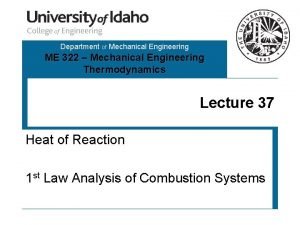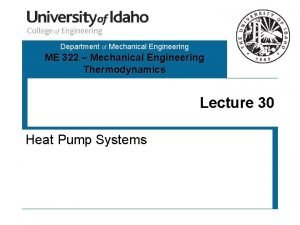ME 431 System Dynamics Dept of Mechanical Engineering





![Closed-loop Control [feedback] R desired speed + E - advantages • robust to errors Closed-loop Control [feedback] R desired speed + E - advantages • robust to errors](https://slidetodoc.com/presentation_image_h2/5a6801b7b293c327f57a7bc283890358/image-6.jpg)


















- Slides: 24

ME 431 System Dynamics Dept of Mechanical Engineering

Lecture 1: Overview and Intro • Control system example • open loop vs. closed loop • Introduction to modeling ME 431 Lecture 1 • Introduction to the control system design process • Solving differential equations • Free response • Forced response 2

Control System Design Process physical system eng specs Translate types of models • physical vs. empirical • mathematical • graphical Plant Design (and Construction) purpose of models • analysis • design • verification diagrams math Model behavior Analyze types of analysis • time domain • frequency domain • simulation • hardware in the loop (HIL) control system Controller Design types of control • supervisory logic control • on/off control • P, PI, PD, PID • advanced techniques ME 431 Lecture 1 customer input / gov’t regulations 3

Control System Example desired speed Control Algorithm throttle angle (voltage) Engine Car force actual speed ME 431 Lecture 1 • Cruise Control Example 4

disadvantages • sensitive to errors in model • sensitive to disturbances • needs periodic recalibration desired speed Control Algorithm advantages • simple to design • inexpensive • doesn’t affect stability • fast response throttle angle (voltage) Engine wind force, gravity force + force Car actual speed ME 431 Lecture 1 Open-loop Control [feedforward] 5
![Closedloop Control feedback R desired speed E advantages robust to errors Closed-loop Control [feedback] R desired speed + E - advantages • robust to errors](https://slidetodoc.com/presentation_image_h2/5a6801b7b293c327f57a7bc283890358/image-6.jpg)
Closed-loop Control [feedback] R desired speed + E - advantages • robust to errors in model • robust to disturbances D wind force, gravity force CONTROLLER ACTUATOR PLANT -U Control Engine Car Algorithm throttle + force angle (voltage) SENSOR measured speed Y actual speed ME 431 Lecture 1 disadvantages • extra complexity • extra cost • can affect stability • can be slow to respond Speedometer 6

Introduction to Modeling • Used for analysis and design, possibly before physical system exists • Can be obtained from first principles or experimentally ME 431 Lecture 1 • A model is an abstraction of the physical world • Purpose determines level of abstraction, form • Complex enough, but no more 7

• From first principles • Use physical laws to derive models • Provides understanding • Can use empirical data to determine parameters, validate model ME 431 Lecture 1 Model Derivation 8

Model Derivation • From empirical data SYSTEM • Good for complicated systems (IC engine, battery) • Good for black-box systems (driver model) • Does not provide intuition, can’t be widely applied ME 431 Lecture 1 • Feed a known input and observe output, fit model to data 9

Complexity Depends on Purpose • Design/analysis model: simpler ME 431 Lecture 1 • Simple enough to generate closed-form solution • Less accurate, but provides intuition 10

Complexity Depends on Purpose • Simulation model: more accurate

Static vs. Dynamic Systems • Output is determined only by the current input, reacts instantaneously • Relationship does not change (it is static!) • Relationship is represented by an algebraic equation input SYSTEM • Output takes time to react • Relationship changes with time, depends on past inputs and initial conditions (it is dynamic!) • Relationship is represented by a differential equation ME 431 Lecture 1 Static Systems output 12

Static vs. Dynamic Systems Motor from a Static Viewpoint Motor from a Dynamic Viewpoint ME 431 Lecture 1 T torque Tstall ea 1 ea 2 wno-load speed w 13

Solving Differential Equations • Righthand side of equation equals 0 • Represents free response of system • Solution consists of exponentials where exponents are roots of the characteristic eq. ME 431 Lecture 1 • Homogenous differential equations 14

Solving Differential Equations • For the above, the characteristic equation is • Roots can be found from the quadratic formula ME 431 Lecture 1 • Homogenous differential equations 15

displacement, x • Recalling that • If the roots are completely real, then the solution is exponential • If all negative, stable • If any positive, unstable ME 431 Lecture 1 Solving Differential Equations 16 time

Solving Differential Equations • Therefore, ME 431 Lecture 1 • If the roots are complex, then can rewrite in sines and cosines using Euler’s identity: 17

ME 431 Lecture 1 Solving Differential Equations • Above follows when have complex roots of char. eq. real part = rate of decay (growth) imag part = freq of oscillation 18

Solving Differential Equations • Solution consists of two parts ME 431 Lecture 1 • Forced differential equations xh is the homogenous solution - same form as before, natural response of system xp is the particular solution - generally same form as F(t), due to the input 19

Example has a solution of the form xh(t) where the homogenous portion dies out (transient) the particular portion remains (steady state) xp(t)

Example • Consider other types of forcing functions:

Example • Find the solution x(t) for

Example • Find the solution x(t) for

Example (continued)
 Bio 431
Bio 431 Me 431
Me 431 Hdl buspro setup tool 2
Hdl buspro setup tool 2 Eee 431
Eee 431 Eee 431
Eee 431 Eee 431
Eee 431 Eee 431
Eee 431 Eee 431
Eee 431 Eee 431
Eee 431 Eee 431
Eee 431 Cs 431
Cs 431 431 bce
431 bce Ds 431
Ds 431 Cse 431
Cse 431 Cse 431
Cse 431 431 bc
431 bc Actual mechanical advantage vs ideal mechanical advantage
Actual mechanical advantage vs ideal mechanical advantage System architecture example
System architecture example Dept nmr spectroscopy
Dept nmr spectroscopy Florida dept of agriculture and consumer services
Florida dept of agriculture and consumer services Organizational structure of finance department
Organizational structure of finance department Worcester ma building dept
Worcester ma building dept Dept. name of organization (of affiliation)
Dept. name of organization (of affiliation) Mn dept of education
Mn dept of education Liz welch mississippi
Liz welch mississippi

